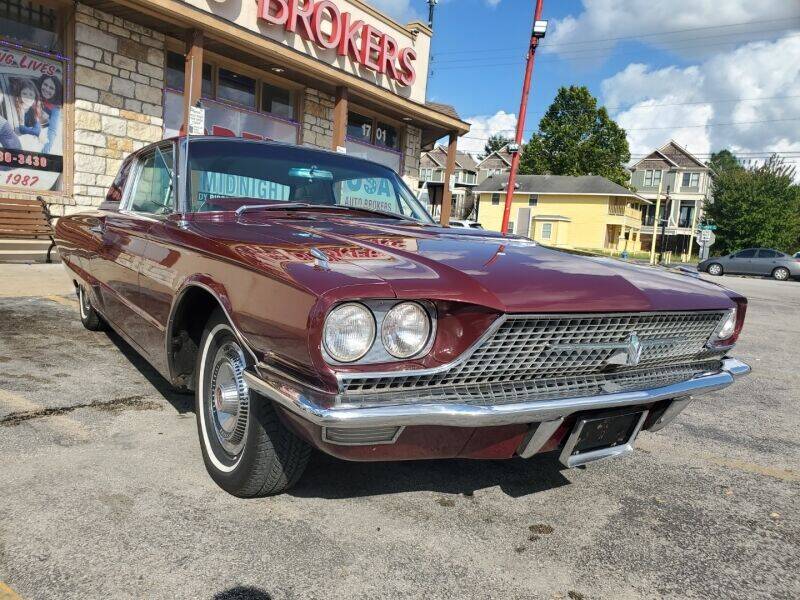
You may be in search of a retro-style car and are wondering how to find one. There are many opinions online on vintage cars. Additionally, you can join forums to get the advice of other retro car enthusiasts. These cars are not as readily available as modern models so it is important to understand the details before you make a purchase.
Ford Bronco
When you're considering buying a Ford Bronco, you're probably wondering how to update it and add modern features. The first Bronco generation was designed for 55 MPH and a two-lane road. The first Bronco was only equipped with three gears, and it reached 60 MPH. You will need to upgrade your transmission if you want to maintain that speed. There are many options, including manual and automatic transmissions.

Nissan Micra
The retro Nissan Micra was a car that was introduced in Japan in October 1982 and would replace the older Nissan Cherry in the supermini segment. With each successive generation of the Cherry getting larger, the Japanese market would be the first to see the new Micra. The new Micra was also called March in Europe, and was sold in Europe. It was a Nissan bestseller and one of its best-selling vehicles in the 1990s.
Citroen's Mehari
A Volkswagen Touareg conjures up images of desert, tribes, and dunes. The Mehari's name isn't a coincidence. The car is a tribute to the camel, an animal that has been used for transportation in harsh environments for many years. Citroen was inspired by the camel's use in the desert, and other areas. The Mehari is a retro car that combines mobility and durability.
Pontiac GTO
Although the second-generation GTO is a highly sought-after collector car, it is not affordable for many. The second-gen Pontiac is one of the most significant muscle cars of all time, and it remains fast and cool even after all these years. Prices are rising, so there isn't much room for a price drop. Let's see how the price of a second generation GTO has changed through the years.
Chrysler's Prowler
Although the Chrysler's Prowler Retro Car was originally only displayed at an auto show back in 1989, it has been viewed all over the globe in recent years. Its retro styling, and its chopped-back appearance, pay homage to the Ford hot rods. The bumperettes at the front and back provide protection against the elements. The vehicle was a hit with retro-minded hot rodders and was a huge success.

Jeep Wrangler
A retro Jeep Wrangler is a desirable vehicle for collectors. These vehicles were manufactured in large numbers at Toledo's Jeep factory. They are easily found in major metropolitan areas and log many miles. Even though the JK may not be the most quiet, it is still possible to find some models that offer low off-road fuel consumption. You'll find the perfect retro Jeep, whether you're looking to buy a Jeep Wrangler or a classic version.
FAQ
What's the difference between a mechanic and an automotive technician?
These two jobs are very similar but not identical. Both a mechanic and an automotive technician can repair cars.
A mechanic must have good manual dexterity and be able to perform simple tasks quickly. They should also be able correctly diagnose and repair any problems.
A technician in automotive is more technical than a mechanic. They should be able read blueprints and use tools like drills and wrenches.
They must be able and competent to safely perform complicated procedures. They need to be familiar with various types of engines and electrical system.
They must also be able comprehend how the various parts interrelate with one another.
A mechanic typically earns less than an automotive technician. Both jobs offer many possibilities.
What kind of car mechanic jobs exists?
There are three major areas of employment that car mechanics work in:
-
Automotive repair shops
-
Dealerships
-
Independent garages
Automotive repair shops
This is where most people first think of becoming a mechanic. This is the best way to get started. Either work for someone else's shop or you can start your own.
If you are interested in working at a shop you will need to apply for membership to a union. After being accepted into the union, the union will provide training.
Once you complete the training, it's time to get started.
You will need to register if your garage is going to be open. After you have registered, you will need to meet certain standards.
You will receive a license to run your garage once you have registered.
Your license allows you to sell spare parts and make minor repairs. It will not permit you to fix major engine issues.
Customers will expect you to not only sell spare parts but also provide advice and guidance.
Dealership jobs
Most dealerships employ mechanics who specialize in one area of the car. They might be able to only fix brakes or replace tires.
Some dealerships have the option to hire general mechanics who can take care of all aspects.
These positions often require applicants that they undergo special training before being allowed work. Employers can then choose the best candidates for their job.
Some dealerships hire students straight out of college. These graduates are familiar with the fundamentals of mechanical engineering so they can easily learn about cars.
Independent garages
Independent garages aren't associated with any particular dealership. Instead, they focus on high-quality customer service.
Independent garages have the ability to afford higher wages, as they aren’t associated with any one company. These jobs generally pay better than those at dealerships.
But this doesn't mean that independent garages are necessarily better places to work. Many owners prefer to control their businesses themselves, rather than delegating it to employees.
This could lead to you working long hours with little control over your day.
You should also expect to earn lower wages than if you were employed at a dealership.
There are many jobs that can be switched between. To work at a dealership you will need to contact your employer to see if he is open to the idea of hiring you.
Alternatively, if you'd like to work at an independent garage, then you could try applying directly to the owner of the garage.
Unfortunately, finding a new job can be difficult. You can earn more depending on many other factors.
Consider, for example, what type of vehicle you are repairing and whether additional labor charges will apply.
To work as an automotive mechanic, do I need a degree? Can I study part time?
A degree isn't necessary, but it certainly helps. Most employers prefer candidates who have studied for a full degree rather than those who haven't. It shows that your efforts have been put in and you have succeeded.
But, this doesn't mean you have to stop working while studying. Many universities permit students to take courses during the summer holidays, and then finish their studies in the fall. Other universities permit students to take classes part-time during the school year.
Is it worth becoming a mechanic?
The answer to that question depends on what your life purpose is. If you're looking for money, then it's true. But, if there are meaning and purpose in your life, then it's not.
If you don’t have any mechanical skills, it’s pointless to get into it. It will just waste your time. It won't make you wealthy. It won't make your name famous. It's unlikely that it will change your life.
It would take you years to learn how to do everything correctly. It would be expensive to have your car fixed by someone else. Most people avoid doing this. They find something better to do instead.
To sum up, if you want to earn lots of money then go ahead. You can't live a meaningful existence if your goal is to make a living in the mechanic's business.
What does it matter which college I attend?
No, not really. There is no difference in the programs offered by colleges for getting into automotive work. There are some schools that offer more specific programs than others.
Statistics
- There were 749,900 jobs available for automotive service technicians and mechanics in 2016, which is expected to grow by six percent through 2026. (jobhero.com)
- According to the BLS, the median annual salary for automotive service technicians and mechanics in the United States was $44,050 in May 2020. (uti.edu)
- 52% of Mechanics in the United States think their salaries are enough for the cost of living in their area. (indeed.com)
External Links
How To
How to be an Automotive Technician
Automotive technicians provide repair and maintenance services to vehicles. He/she works in car dealerships as well as auto shops, garages, and service centers. He/she repairs cars, trucks, motorbikes and snowmobiles for customers. An automotive technician must be capable of diagnosing problems and making repairs safely, accurately and efficiently.
A person who wants to work as an automotive technician should first obtain an associate degree from a vocational school. After completing this program, he/she will need to pass the National Institute for Automotive Service Excellence's (ASE) certification exam. ASE stands for American Society of Mechanical Engineers. The ASE certification test consists two sections. One section tests knowledge of mechanical components, while the other section tests skills in practical areas. You will need to attend an authorized testing site in order to pass the test. These locations can be found online, or by contacting your local car dealer.
After passing the test, a candidate must pass a state examination before becoming licensed as an automotive technician. The process will vary depending on where an applicant lives. Some states require that applicants attend a training class, while others allow them freedom to study at their own pace. Some states allow technicians to become licensed right away after receiving their license. While others wait until they have had at least six years of experience as an automotive technician.
Apply to your local dealership to become an automotive technician. Most new employees work as apprentices after they have been hired. Apprenticeship programs last about three years. During this time, a student learns how to perform basic repairs, such as changing oil, adjusting brakes, replacing tires, cleaning spark plugs, inspecting engine compartments, and performing routine maintenance. Some students are taught how to repair engines and replace transmission fluids. Many schools offer classes during normal business hours. However, some schools offer evening classes if needed.
Once a student completes his/her apprenticeship, he/she becomes a journeyman. Journeymen usually spend four to five year learning how to install major systems like transmissions, differentials steering gear, suspensions, drive shafts, and steering gear. You will also learn how to repair complicated electrical components, as well as how to remanufacture engines and rebuild transmissions. Many employers prefer to hire Journeymen because they understand the job well.
A candidate who passes all the necessary exams and gets a license might be interested in opening his/her own business. According to Bureau of Labor Statistics, there were almost 1.7 million available jobs in the automotive mechanic field in 2010. This figure is expected to rise 18 percent between 2009-2020. Candidates who decide to open their own business should be prepared to invest thousands in equipment and supplies.
The salary for an automotive technician depends on several factors, including the type of employer, location, education level, and experience. On average, an unemployed person could earn $20,000 annually. A person with only a high-school diploma could make around $21,000 annually. A bachelor's degree is equivalent to approximately $24,000 annually. Technicians with a bachelor's degree earn about $27,000 per annum. Master's degree holders make around $32,000 annually. Salary increases are common so professionals who make less than $30,000 a year could realistically expect to earn $40,000 over the next few years.